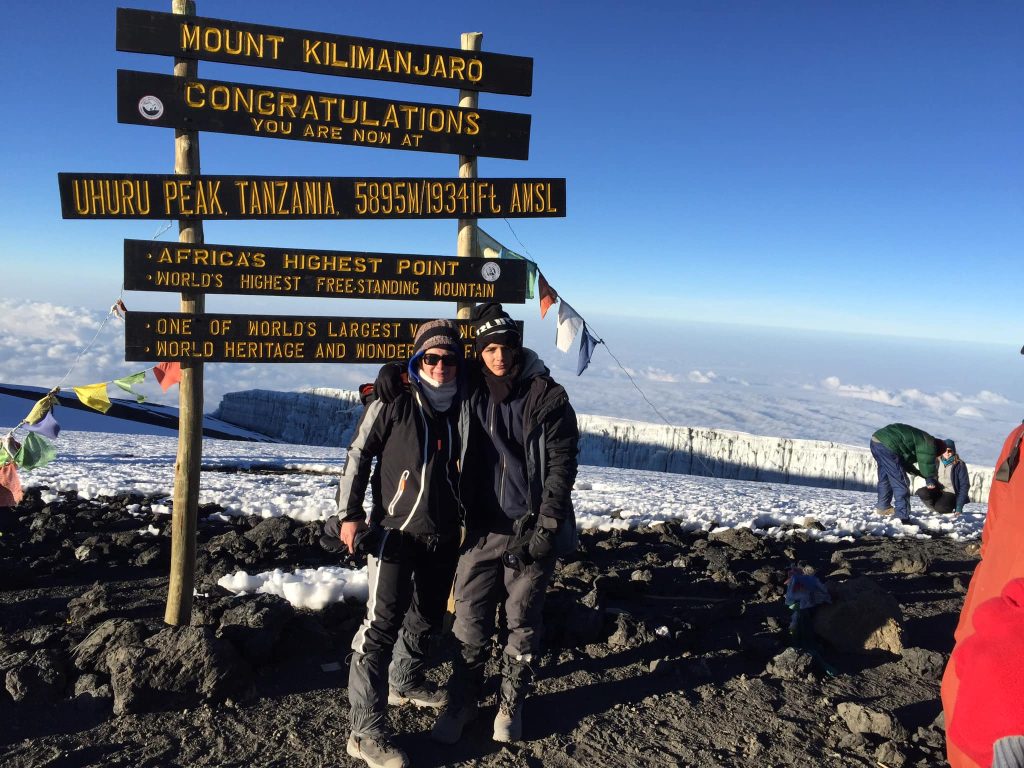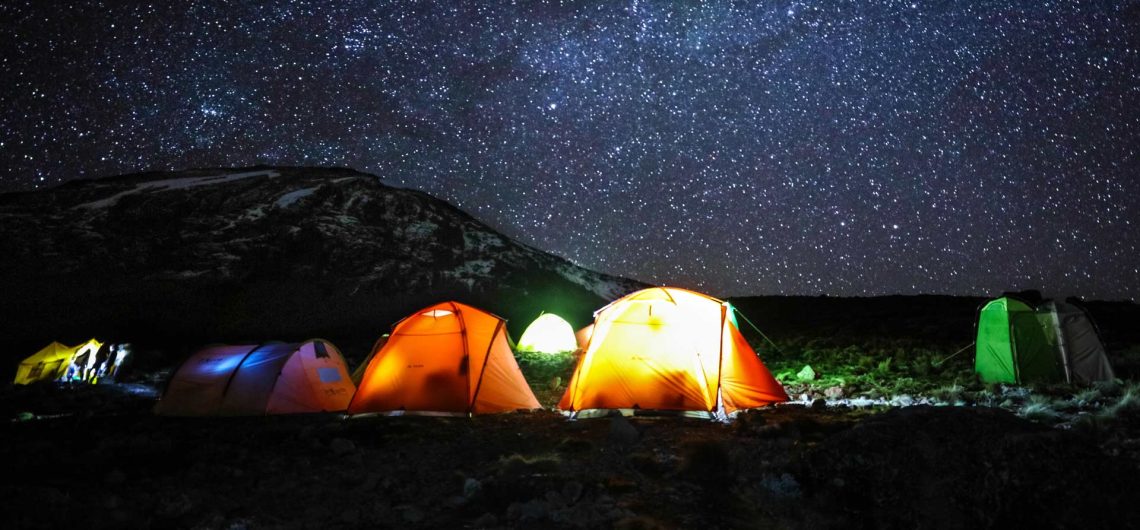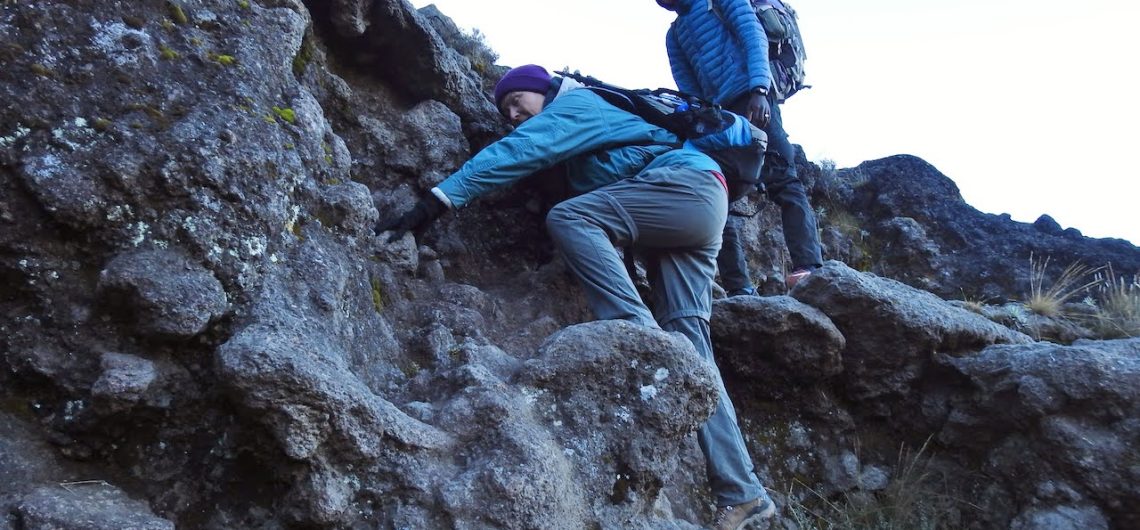Summit night on Mount Kilimanjaro is the most challenging and emotionally intense part of the entire trek. While the journey to the top is a remarkable adventure, the final ascent to the summit is often what people remember most vividly. It’s where physical stamina, mental endurance, and sheer determination all come into play. Knowing what to expect can help you mentally prepare for this unforgettable experience.
The Timeline of Summit Night on you Kilimanjaro Climb
Summit night usually begins around midnight, when temperatures are at their coldest. After a few hours of rest at the high camp—typically Barafu Camp or Kibo Hut—your guides will wake you up for the final push to the summit. You’ll likely have a light snack and a hot drink before setting off in the dark with your headlamp illuminating the rocky path ahead.
Most climbers will reach the summit between 6 AM and 9 AM, just in time to witness the sun rise over the African plains. The entire summit push takes around 6-8 hours to reach Uhuru Peak and an additional 5-7 hours for the descent back to the base camp, making it a 12-14 hour ordeal in total.
The Physical Challenge on Kilimanjaro’s Summit Day
One of the most grueling aspects of summit night is the combination of the extreme cold, steep incline, and high altitude. You will ascend 4,084 feet (1,245 meters) in a single night while battling temperatures that can plummet to -20°C (-4°F) or lower. The air at this altitude contains roughly half the oxygen of sea level, making every step feel exhausting.
What Does the Trail Look Like on the Summit Day?
The path to the summit is steep and rocky, especially from Barafu Camp on the southern routes like Machame, Lemosho, and Rongai. From Kibo Hut on the Marangu route, the trail is made of loose scree, which can be tricky to walk on. The slow pace (“pole pole” as guides say) is essential, as rushing will only deplete your energy faster.
You’ll likely walk in single file, focusing on placing one foot in front of the other. During this trek, you’ll feel physically drained, but the goal of reaching the summit keeps everyone moving forward. The guides play a crucial role here, keeping an eye on climbers for signs of altitude sickness and motivating the group to stay on course.
Mental Toughness
What sets summit night apart from other days on Kilimanjaro is the immense mental challenge. The hours are long, the night feels endless, and every step requires concentration and determination. Many climbers report moments of doubt and exhaustion, but mental toughness is key. Keeping a positive attitude and reminding yourself of your reasons for climbing can make a world of difference.
It’s important to focus on small milestones, like reaching Stella Point or seeing the sun start to rise. Remember that it’s okay to take frequent breaks and to communicate with your guide if you feel overly fatigued or ill.
The Psychological Battle
Summit night is as much a psychological challenge as a physical one. It’s natural to feel moments of self-doubt or to wonder whether you can make it. This is where your mental preparation really counts. Visualization techniques, where you imagine yourself standing at the top of Kilimanjaro, or thinking about the rewarding view from the peak, can help push you through the toughest moments.
Dealing with Altitude on Kilimanjaro’s Summit Day
Altitude sickness (Acute Mountain Sickness, or AMS) is common during the summit push. Symptoms like headache, dizziness, and shortness of breath are signals that your body is struggling with the lack of oxygen. Slow pacing is critical to help your body acclimatize. Some climbers also choose to take medications like Diamox to reduce the risk of altitude sickness, though this should be done under the guidance of a medical professional.
Guides will closely monitor you for signs of more serious altitude-related conditions, such as High Altitude Pulmonary Edema (HAPE) or High Altitude Cerebral Edema (HACE), which are medical emergencies. Trust your guide’s judgment—if they advise you to turn back, it’s for your safety.
The Reward of Reaching the Summit

As the sky begins to lighten with the first hints of dawn, you’ll approach Stella Point, located on the crater rim of Kilimanjaro. Many climbers describe this as a deeply emotional moment because it signals that you’re close to the top. After another 45 minutes to an hour of hiking, you’ll reach Uhuru Peak, the highest point in Africa at 5,895 meters (19,341 feet).
Standing at the summit, you’ll feel an overwhelming sense of accomplishment. The panoramic views of the surrounding landscape—snow-capped peaks, glaciers, and the vast African plains—are breathtaking. You’ll likely pause to take photos next to the iconic Uhuru Peak sign and reflect on the journey that got you there.
The Descent: A Test of Endurance
While reaching the summit is the highlight of the trek, the descent should not be underestimated. After basking in your achievement for a few moments, it’s time to begin the long walk back to camp. Descending is faster but equally challenging as your legs are fatigued, and the steep, slippery scree can make footing difficult.
Once you reach base camp, you’ll have a well-deserved rest before continuing your descent to lower altitudes, where oxygen levels are higher and temperatures warmer. You’ll feel an enormous sense of relief, satisfaction, and pride at having conquered Kilimanjaro.
Mount Kilimanjaro’s Summit night
Summit night on Kilimanjaro is a test of your physical and mental resilience, but it’s also an incredibly rewarding experience. Despite the cold, the altitude, and the fatigue, the moment you stand at Uhuru Peak will make it all worth it. It’s a memory that will stay with you forever, a testament to your determination and strength.
FAQs for “What to Expect on Summit Night”
-
How long does summit night on Kilimanjaro take?
Summit night typically lasts 12 to 14 hours. You’ll start around midnight, ascend to the summit for 6-8 hours, then descend for another 4-6 hours back to camp.
-
What is the temperature during summit night on Kilimanjaro?
Temperatures can drop as low as -20°C (-4°F) or even lower at the summit, especially with wind chill. It’s the coldest part of the climb, so proper gear is essential.
-
Why is summit night so difficult on Kilimanjaro?
Summit night is challenging due to extreme altitude, low oxygen levels, cold temperatures, and the steep ascent. The combination of these factors makes it both physically and mentally tough.
-
What should I wear on summit night?
Layering is key. Wear thermal base layers, fleece or down mid-layers, and a waterproof, windproof outer shell. Don’t forget insulated gloves, a warm hat, and a balaclava to protect your face from wind.
-
How can I prepare for summit night mentally?
Summit night requires mental resilience as much as physical stamina. Focus on your reasons for climbing, pace yourself with “pole pole” (slowly, slowly), and keep a positive mindset. Trekking with a supportive group or guide can help as well.
-
Is summit night dangerous?
Summit night can be tough, but it’s not inherently dangerous if you are well-prepared, acclimatized, and with an experienced guide. Your guide will monitor your health and offer support as needed.
-
Can I turn back during summit night?
Yes, if you’re not feeling well or if conditions become unsafe, you can turn back at any point. Your guide will assess your condition and make the call if it’s necessary.
Summit night on Mount Kilimanjaro is both the most challenging and the most rewarding part of the entire climb. As you push through the cold, fatigue, and high altitude, the sense of achievement when you reach Uhuru Peak is unparalleled. With the right preparation, mindset, and support from your guides, you can conquer this demanding night and savor the breathtaking views from the Rooftop of Africa. Remember, the journey may be tough, but the experience and memories will last a lifetime.


